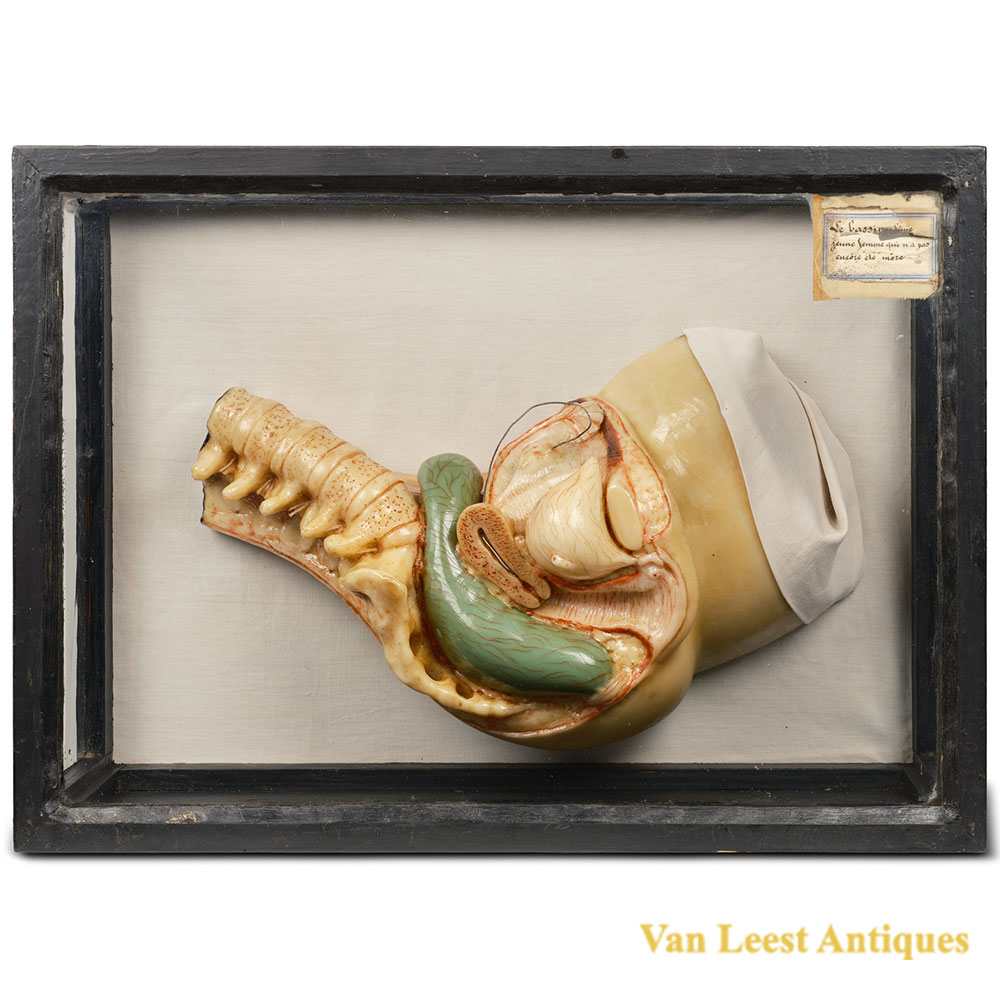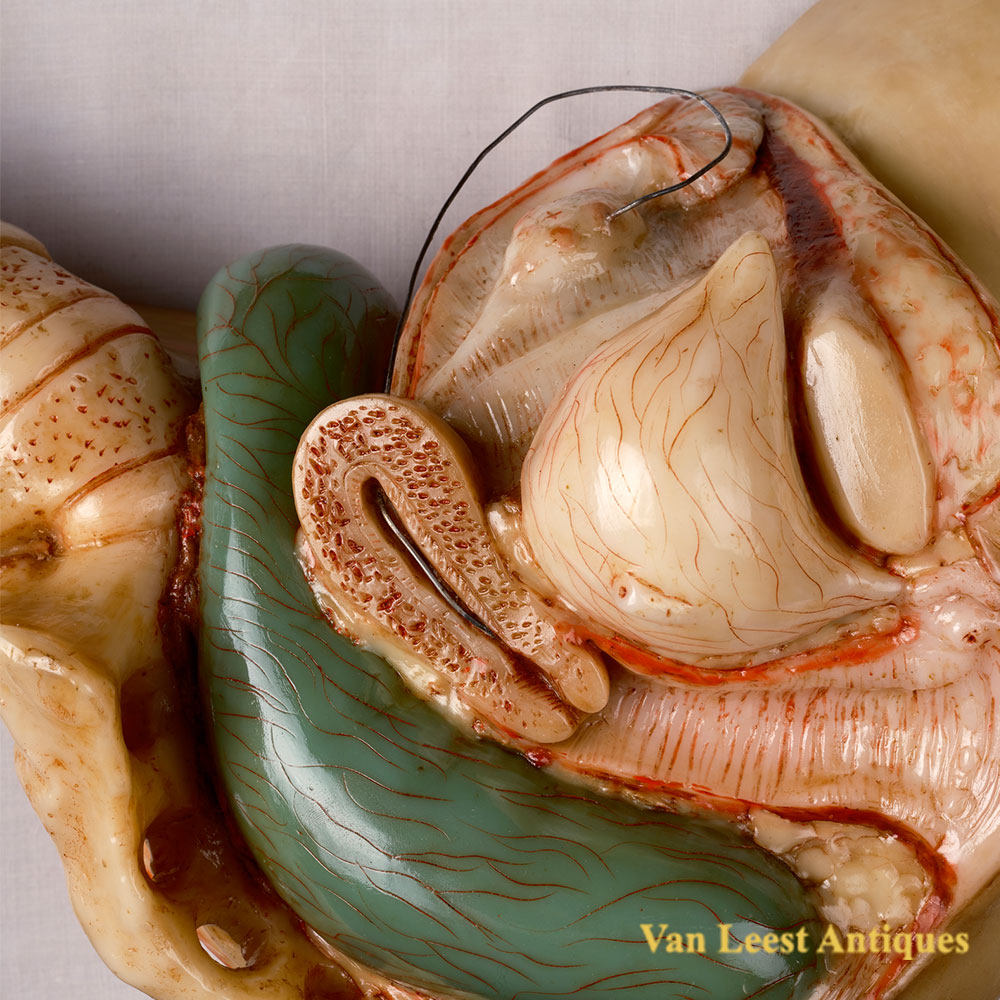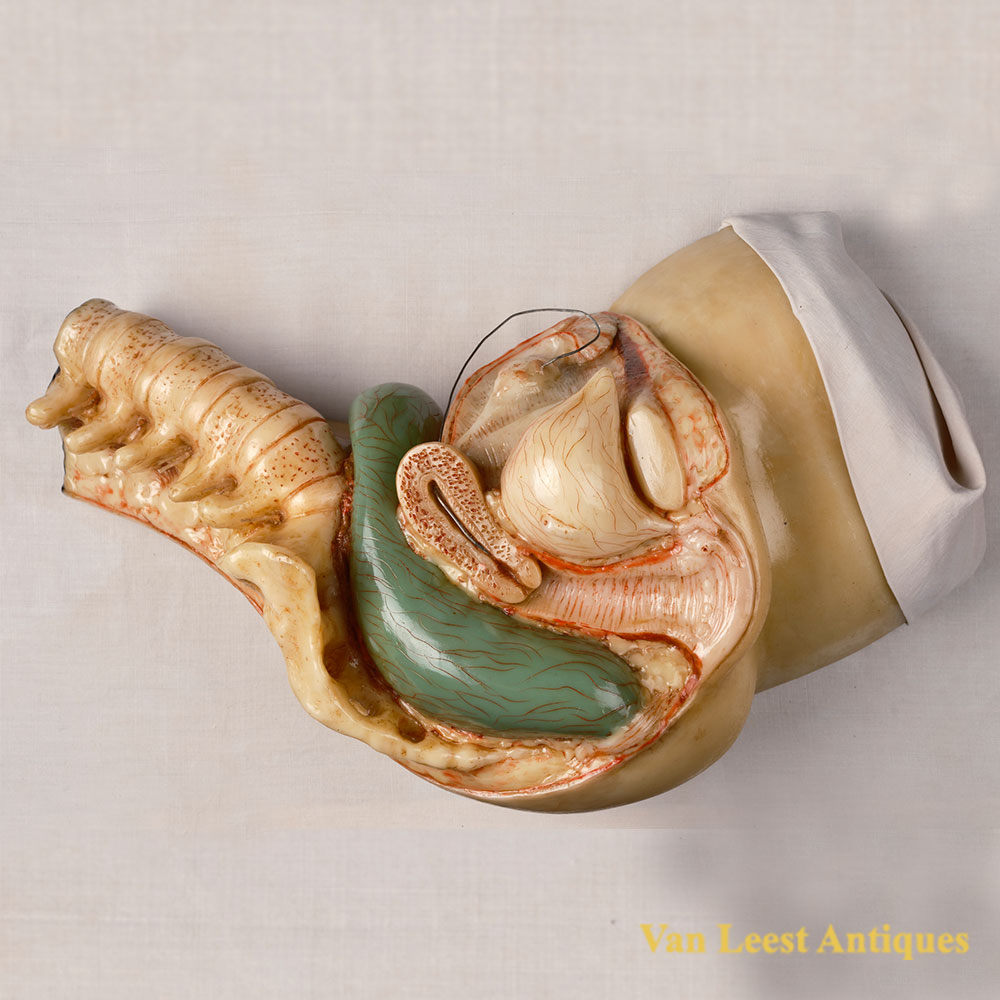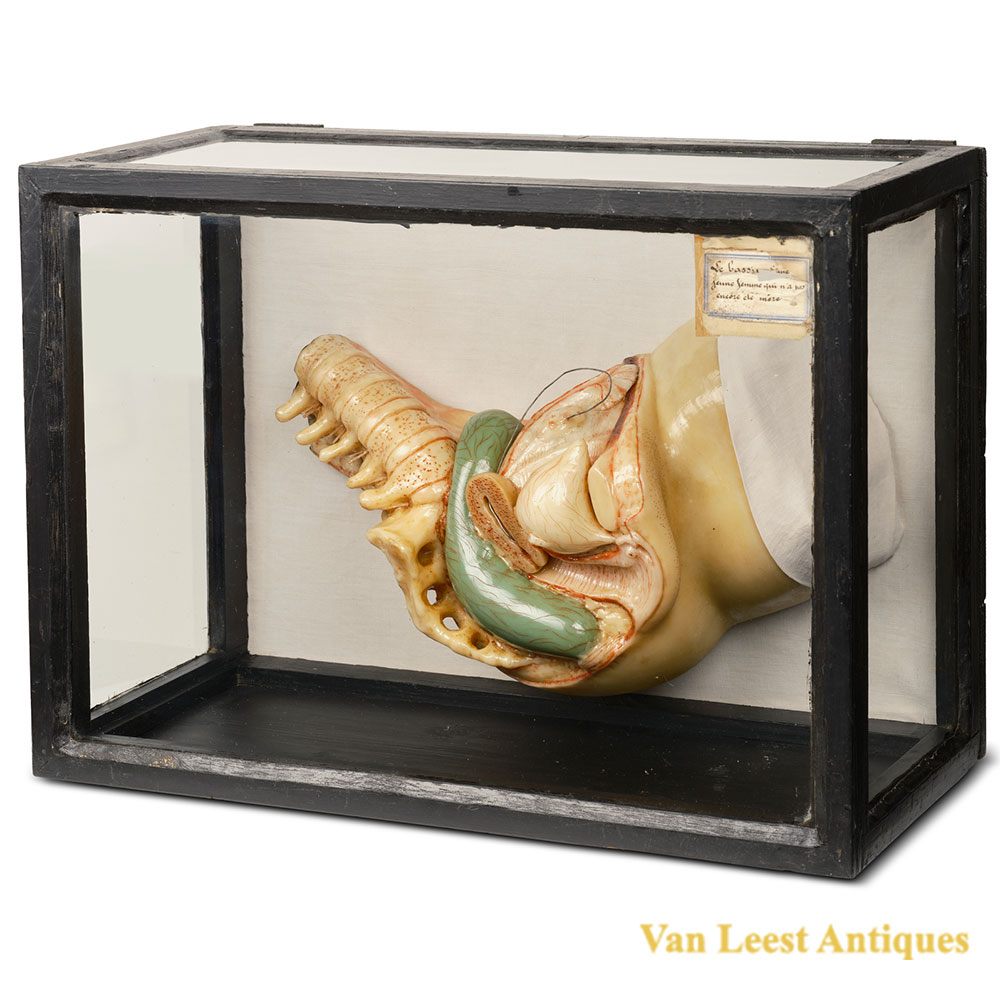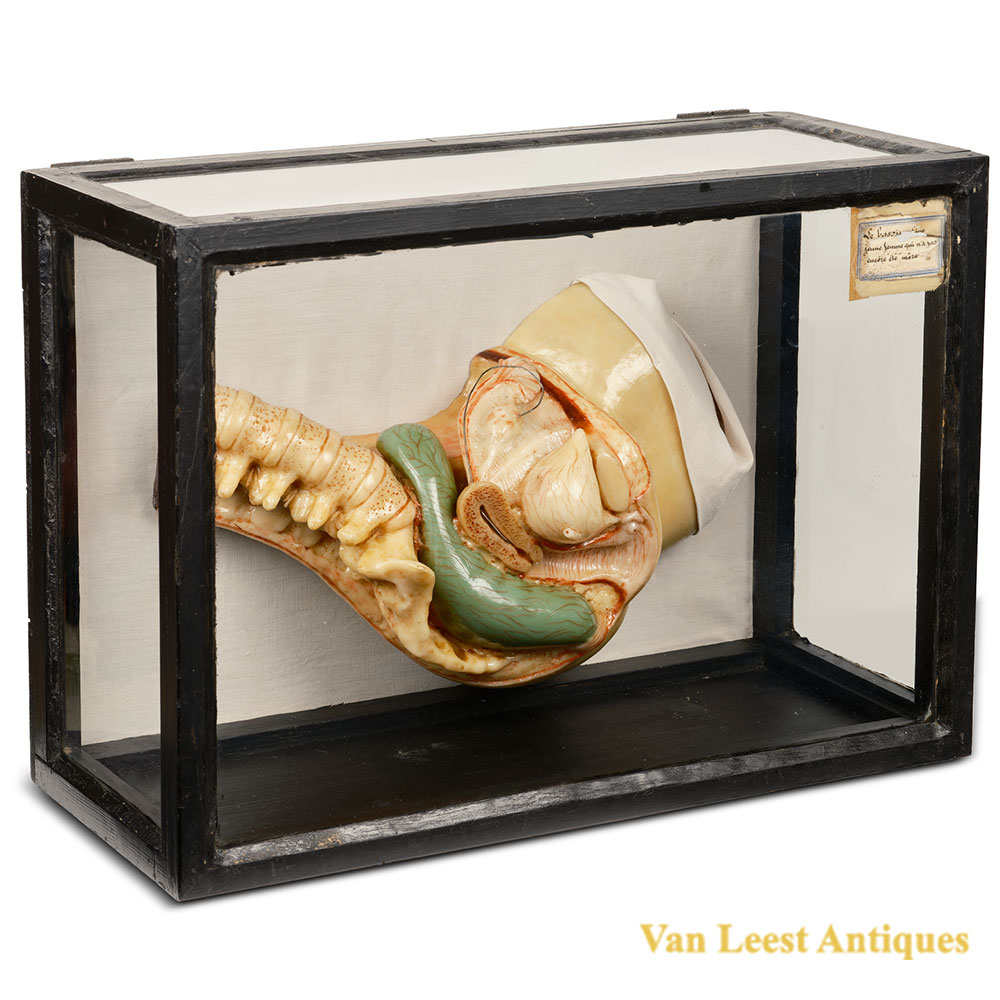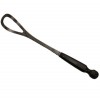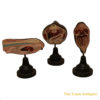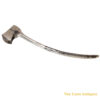Description
In our collection are currently three Talrich wax models of museum quality, made by the renowned maker Jules Talrich. The models are all in perfect restored condition. Our Parisian restorer made them ready for the upcoming 50 years, which means that they are cleaned and provided with a natural wax varnishing layer. The models can ‘breath’ and will not get a mold formation. Pictures before the restorain are available on application.
The wax models of Jules Talrich are known for their quality and were purchased and presented by numerous institutions (such as the Dupuytren Museum) during universal exhibitions. For example, at the World Exhibition of 1862 in London, he presented preparations in the field of angiology, neurology, osteology, and natural history, as well as busts for the study of phrenology, but especially a model for the study of the myology of the middle and deep layers of the human body.
Between January 1866 and the autumn of 1867, Talrich operated a wax museum on Boulevard des Capucines (No. 39), in a space formerly occupied by Ponti’s alethoscope and called the “Musée français”. The attractions—sometimes morbid or voyeuristic, akin to the “Chamber of Horrors” at Madame Tussauds in London—drew sensation-seeking visitors, including personalities such as the imperial prince. For one franc per person, visitors could see wax figures depicting various historical or literary scenes: Don Quixote and Sancho Panza, ‘L’Amour vainqueur’ (Hercules and Omphale), Renaud and Armide, Tancredi and Herminia (characters from Tasso’s Jerusalem Delivered), André Vesalius, Adam and Eve (the latter giving birth to Cain), the martyr Saint Juste in his shrine, and ‘Sara la baigneuse’ naked in her hammock (from Victor Hugo’s Les Orientales). One room paid tribute to Guillaume Dupuytren, depicted giving an anatomical lesson in an amphitheater, allowing Talrich to exhibit various of his casts.
The model
The original text states that this is a ‘wax model of the Pelvis of a well-formed young woman in a state of emptiness.
Note. — This first model is intended to serve as a comparison with the nine months of pregnancy, as well as with uterine deviations.
The right side of the uterus has been removed to show the cavity of the uterine body and that of the cervix, in which one can see half of the tree of life and the tanche snout. A small metal stylus indicates the opening of the left fallopian tube into the uterus, as well as the path taken by the ovum when it is expelled from the ovary at the time of menstruation or after fertilization.
The bladder and rectum are intact, but only the left half of the vagina remains, in order to show the large and small left labia, the clitoris, the urethra and the urinary meatus, the myrtiform caruncles, as well as the anterior and posterior columns of the vagina.’
Original French text:
Bassin d’une jeune femme
bien conformée (à l’état de vacuité).
Nota. — Ce premier modèle est destiné à servir comme type de comparaison avec les neufmois de la grossesse, ainsi qu’avec les dévia¬ tions de l’utérus.
Le côté droit de l’utérus a été enlevé afin de montrer la cavité du corps de l’utérus et celle du col, dans laquelle on voit la moitié de l’arbre de vie, et du museau de tanche.
Un netit stylet de métal indique l’ouverture de la trompe gauche dans l’utérus, ainsi que le trajet parcouru par l’ovule lorsqu’il est expulsé de l’ovaire à l’époque de la menstruation ou après sa fécon¬ dation.
La vessie et le rectum sont en entier, mais la moitié gauche du vagin reste seule, afin de montrer dans leurs rapports respectifs la grande et la petite lèvre gauche, le clitoris, l’urèthre et le méat urinaire, les caroncules myrtiformes, ainsi que les colonnes antérieure et postérieure du vagin.
Measurements 55 x 41 x 27 cm.
Note: this model is part of a series of three
Find out more on www.vanleestantiques.com
Ask the Dealer
Dealer information
 Van Leest Antiques
Van Leest Antiques
Van Leest Antiques
Van Leest Antiques, based in Utrecht in the Netherlands, specialises in antique scientific and medical instruments. Their collection covers mainly scientific and medical antique instruments: barometers, globes and planataria, nautical instruments, anatomical models, and pharmacy items. Toon Van Leest travels regularly in Europe and visits trade fairs, auctions, and antique dealers to collect stock and to find pieces to fulfil his clients' unusual requests.
As well as being an avid antique collector and dealer, Toon Van Leest is also a dentist. He believes that antiques are a stable investment, not reliant on trends or fashion, and have truly lasting value. Above all, he says, antiques are timeless and never lose their beauty.




